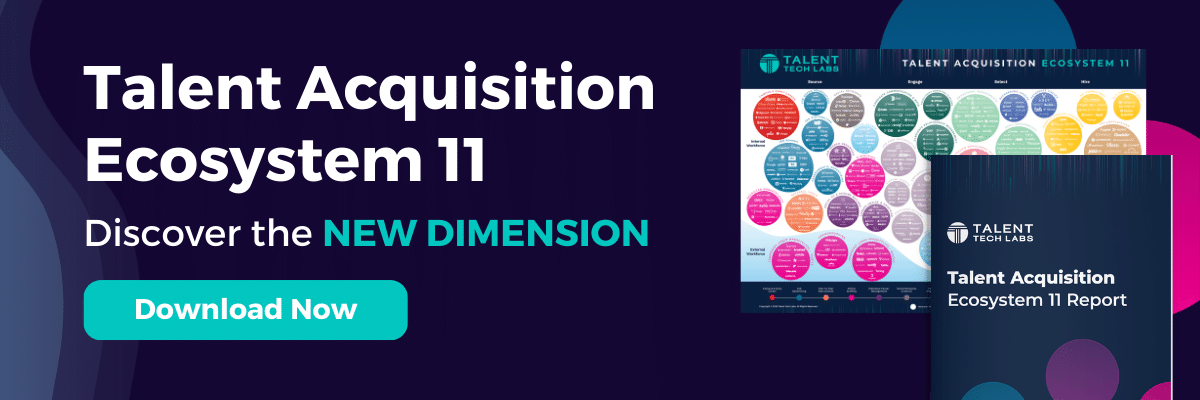Job advertising has made its way into all many different facets of our culture, from fast food restaurants advertising openings on stickers attached to orders to Amazon placing TV spots during NFL Sundays. One of the more clever areas is for companies to drop job advertisements into social media channels, to meet candidates–that may not be exploring Indeed, LinkedIn, or ZipRecruiter for jobs and may not even be looking for new jobs at all–where they are, in places where they are spending much of their time each day. This blog post provides high level insights of job advertising through social media. For a comprehensive analysis of this, as well as other cutting-edge talent technologies, reach out to us today!
The Role of Social Media Platforms as a Job Advertising Channel
This style of advertising grew out of employer activity on LinkedIn. LinkedIn was the perfect medium for social media-targeted job advertising, because the site’s job board and company profiles grew out of its core social network for professionals. Companies had a large, accessible base of potential active and passive candidates, and those companies already had their own content in place to allow candidates to go deeper than the job advertisement itself–much of the candidate research about the companies posting job advertisements could be done seamlessly, right on LinkedIn itself. LinkedIn job advertising helped provide a template for how job advertising could work on other social media platforms.
That template looks generally like this: companies either host profiles on a social media platform or have recruiters actively engaging with the platform. Recruiters post job advertisements on the platform, via text, video, audio, or all of the above, and those advertisements can not only share information about specific job opportunities, they can also link back to company profiles themselves. Companies can market themselves and job opportunities all in one advertisement. Because potential candidates traditionally have detailed profiles on social media sites, companies can target advertisements to individuals most likely to show interest in their jobs. Companies might also advertise–with free or paid posts–on industry-related groups on social media platforms, casting a wider net than a profile-specific targeted advertisement but nonetheless tailoring advertising to a narrow set of potential candidates.
The flexibility of social media allows companies to share more information about themselves, like their work (e.g., success stories or webinars), building a brand that can not only attract immediate interest from candidates but can gain interest from individuals that may apply down the road, based on the reputation that the company has built in part through that brand-building job advertising. Perhaps best of all, most social media channels where companies might post jobs have built-in messaging. Recruiters can reach out to candidates–and vice versa–directly on the platform, speeding up the hiring process.
Where are Companies Posting Job Advertisements?
LinkedIn is where much of social media job advertising has its roots, and it’s still used heavily today, but recruiters now have a heavy presence on both Facebook and Instagram, X (Twitter), Snapchat, YouTube, and, more recently, TikTok. Just like any other form of advertising, the medium is often the message with a job advertisement. As an employer, you’re targeting a different audience with a TikTok short video than you are with a written job advertisement on LinkedIn. Social media advertising can be particularly effective for harder-to-reach candidates (e.g., younger candidates) you might be seeking for high-volume roles. Your target audience might not be active on or even aware of sites like Indeed, but chances are they are active on at least some social media sites, probably every day. It might take extra effort to turn these passive candidates into applicants, but advertising on social media is relatively inexpensive, which leaves a little more opportunity to attract candidates over time.
Key Advantages of Social Media Job Advertising
In sum, there are a few key advantages of social media job advertising versus traditional job advertisements. First, it’s fairly low cost. Recruiters can even post for free to test the waters on particular job opportunities, and after they see what strategies or jobs are getting the most traction, they can put dollars behind campaigns that are most likely to succeed. Social media sites generally offer great analytics on paid advertisements, so recruiters can easily recalibrate campaign spending over time. Second, it’s one of the best ways of reaching passive candidates. Most people actively use social media, even if they never use job boards. A company will reach candidates they never would have attracted via job boards alone. Third, social media advertisements do a better job of advertising the company as well as the job. For instance, videos can be more engaging and provide a fuller picture of the company than a text-based job advertisement can. They can also offer a more personal feel for the company than a traditional advertisement. It’s no surprise that social media has become a consistent part of many companies’–particularly bigger companies and almost every large multinational–job recruiting strategy.
Social Media and Job Board Advertising is Coevolving
Job advertising has made its way into social media in a major way, but social media tools have also migrated into traditional job boards, in turn. Sites like Indeed allow companies to post recruitment videos, which are not straightforward job advertisements but rather those branding opportunities as described above. Similarly, job boards now offer detailed company profile pages, which help to build that social media-like experience, where candidates can seek out detailed information about a company either actively in pursuit of job opportunities or passively to learn more about what it is like to work at the company. In addition, job boards have worked to expand candidate profile information, to provide employers a more detailed look at candidates, as well as to better target job opportunities relevant to each candidate.
Job boards have replicated much of the granular detailed analytics behind social media commercial advertisements and applied them to job advertisements. Finally, vendors have introduced tools that have made it easier to bridge the gap between job boards and job advertising and the most useful tools behind social media sites. For instance, Talkpush makes it easy for employer to connect their paid advertising to social media communication channels, so that it is easy for employers to engage candidates about job opportunities on platforms like Facebook Messenger, Instagram, or WhatsApp. The end goal remains the same for companies using social media job advertising: instead of depending on candidates to find their job openings, these companies are doing a better job of meeting all types of candidates where they already are.
Want to learn more? Talent Tech Labs can help! Reach out to us today.

